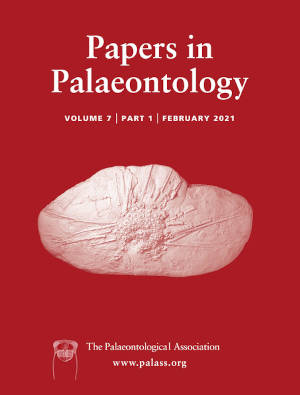Reg. Charity No. 1168330

A new miospore genus, Maiaspora, is described from the upper Visean (middle Mississippian) of the southern wing of Moscow Syneclise (European Russia). Applying a combination of methods (optical light microscopy (LM), scanning‐electron microscopy, confocal laser microscopy (CLSM) and image analysis) to the same individual miospore specimens revealed a remarkable sculptural type for which we propose the new term ‘metareticuloid’. Metareticuloid sculpture is defined as a complex arrangement of muri with apiculate elements, polygonal lumina and circular scrobiculae at the base of the lumina. The discovery of fossil spores with metareticuloid sculpture allows the recognition of clear morphological differences between microreticulate and foveolate sculptures, which palynologists have historically had difficulty in separating. Virtual cross‐sections provided by CLSM show that miospores with metareticuloid sculpture display perfectly preserved, funnel‐shaped tunnels (like a gallery of cave stalactites) in the deep exospore. In contrast, miospores with microreticulate or reticulate and partly vermiculate sculpture lack such vertical tunnels (termed scrobiculae). The morphology of Maiaspora gen. nov. is considered in comparison with Microreticulatisporites (Knox non sensu Potonié & Kremp) Bhardwaj emended Oshurkova, Pseudoreticulatispora Bharadwaj & Srivastava emended Price & Foster, Vadaszisporites (Deák & Combaz) emended Juhász, Foveosporites Balme, Foveotriletes van der Hammen ex Potonié, Garotriletes Singh & Singh, Assamiasporites Mehrota & Sah, and Margotriletes Mehrota & Sah. The morphological conceptions of Microreticulatisporites and Foveotriletes are reinterpreted by numerical typification. The adaptative significance of metareticuloid sculpture is discussed in relation to modern and fossil spores, and in terms of harmomegathic mechanisms of angiosperm pollen.